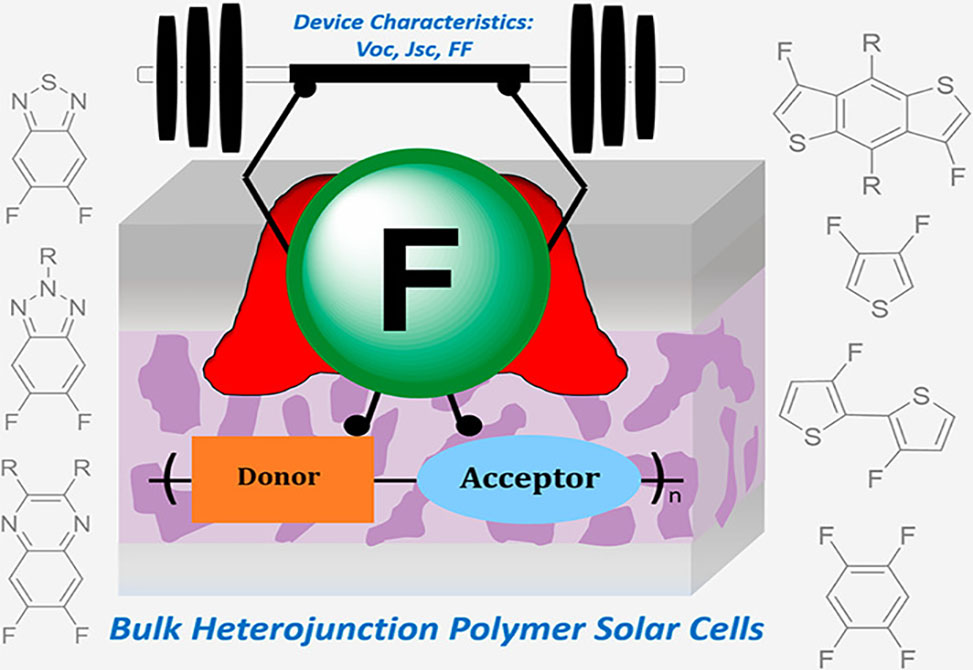Organic Solar Cells
Organic solar cells, OSCs, have been a rising star in the field of renewable energy since the introduction of the bulk heterojunction, BHJ, in 1992. Recent advances have pushed the efficiencies of OSCs to over 13%, an impressive accomplishment via collaborative efforts in rational materials design and synthesis, careful device engineering, and fundamental understanding of device physics.
Throughout these endeavors, several design principles for the conjugated donor polymers used in such solar cells have emerged, including optimizing the conjugated backbone with judicious selection of building blocks, side-chain engineering, and substituents. Among all of the substituents, fluorine is probably the most popular one; improved device characteristics with fluorination have frequently been reported for a wide range of conjugated polymers, in particular, donor–acceptor (D–A)-type polymers.
Published in Accounts of Chemical Research, researchers in the You Group examine the effect of fluorination on the device performance of solar cells as a function of the position of fluorination, on the acceptor unit or on the donor unit, aiming to outline a clear understanding of the benefits of this curious substituent.
As fluorination of the acceptor unit is the most adopted strategy for D–A polymers, the group members first discuss the effect of fluorination of the acceptor units, highlighting the five most widely utilized acceptor units. While improved device efficiency has been widely observed with fluorinated acceptor units, the underlying reasons vary from case to case and highly depend on the chemical structure of the polymer.
Second, the effect of fluorination of the donor unit is addressed. In this section, group members focus on four donor units that have been most studied with fluorination. While device-performance-enhancing effects by fluorination of the donor units have also been observed, it is less clear that fluorine will always benefit the efficiency of the OSC, as there are several cases where the efficiency drops, in particular with “over-fluorination”, in essence, when too many fluorine substituents are incorporated.
Finally, while the article focuses on studies in which the polymer is paired with fullerene derivatives as the electron accepting materials, non-fullerene acceptors, NFAs, are quickly becoming key players in the field of OSCs. The effect of fluorination of the polymers on the device performance may be different when NFAs are used as the electron-accepting materials, which remains to be investigated. However, the design of fluorinated polymers may provide guidelines for the design of more efficient NFAs. Indeed, the current highest-performing OSC, ~13%, features fluorination on both the donor polymer and the non-fullerene acceptor.


